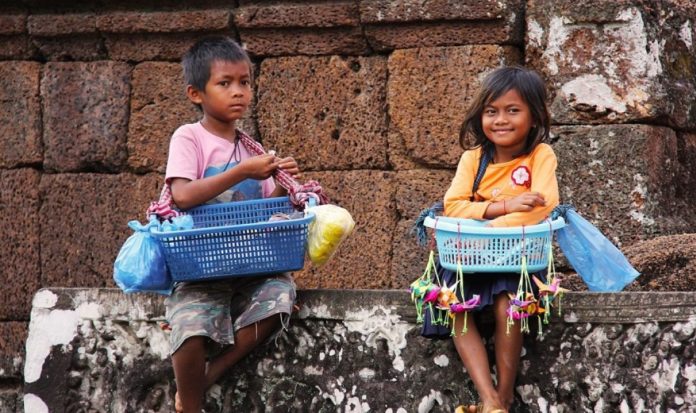The exam’s Comprehension Text
[1] Earlier this year, a United Nations (UN) report found that 10 percent of Cambodian children between the ages of 7 and 14 are working. It is one of the highest rates in Southeast Asia. The report said that one in four Cambodians aged 7 to 14 are forced to drop out of school to help their families. UN officials say the child labour rate in Cambodia has dropped over the past 10 years, but the country has a lot more to do to keep a greater number of children in school.
[2] One story begins at a brick factory in Cambodia. Outside the building, 15-year-old Pheap and her mother, Chrup, are turning pieces of dirt into bricks. Pheap has worked at the factory for one year. She was taken out of school to support her father who was sick and to look after her 10-year-old sister and baby brother. Pheap and her mother each earns $80 a month. They work eight hours a day, seven days a week.
[3] About 430,000 Cambodians under 18 are employed. Half of them work in what the International Labour Organization calls the worst forms of child labour. These include agriculture, salt production, housework, fishing and brick-making. The director of the Child Labour Department in Cambodia says that targeting areas like agriculture and fisheries has helped reduce the number of child labourers to nearly a half since 1999. Making sure Cambodian children stay in school is a priority for the government.
[4] World Vision, a non-profit group, seeks to reduce child labour by offering assistance for both education and household incomes. The group, which operates a four-year project called EXCEL, receives financial support from the U.S. Department of Labour and has already helped 20,000 children. The group’s leader Imelda Ochavillo says Cambodians are becoming less tolerant of child labour. But she says that more is needed to solve this complex issue. “If we want to reduce it significantly, we should alleviate poverty, provide alternative sources of income, offer decent employment for youth, and make education accessible.” She says child labour is usually not a major issue for children under age 12. Most of them remain in their villages and attend school. But it is between the ages of 12 and 17 that child labour becomes an issue.
[5] Pheap dreams of finding a job in a clothing factory. That could double her wage. Her mother Chrup wants more for her, too. She says she does not want her daughter to work in the brick factory. But a better future for Chrup’s family is far from guaranteed. Her other daughter, aged 10, won’t be admitted to school because of her age. Anyway, she is needed to look after her baby brother. Definitely, it is hard for Pheap and other Cambodian children to find a way out of poverty without education.
Adapted from: http://learningenglish.voanews.com
National exam | Arts Stream | Catch-up Session 2016 with Answers





